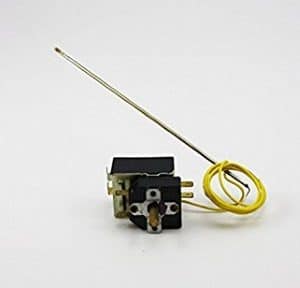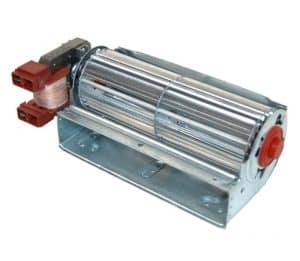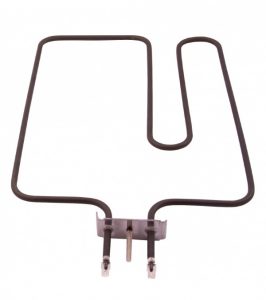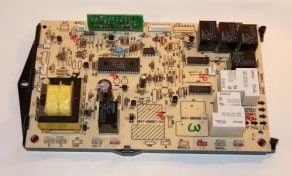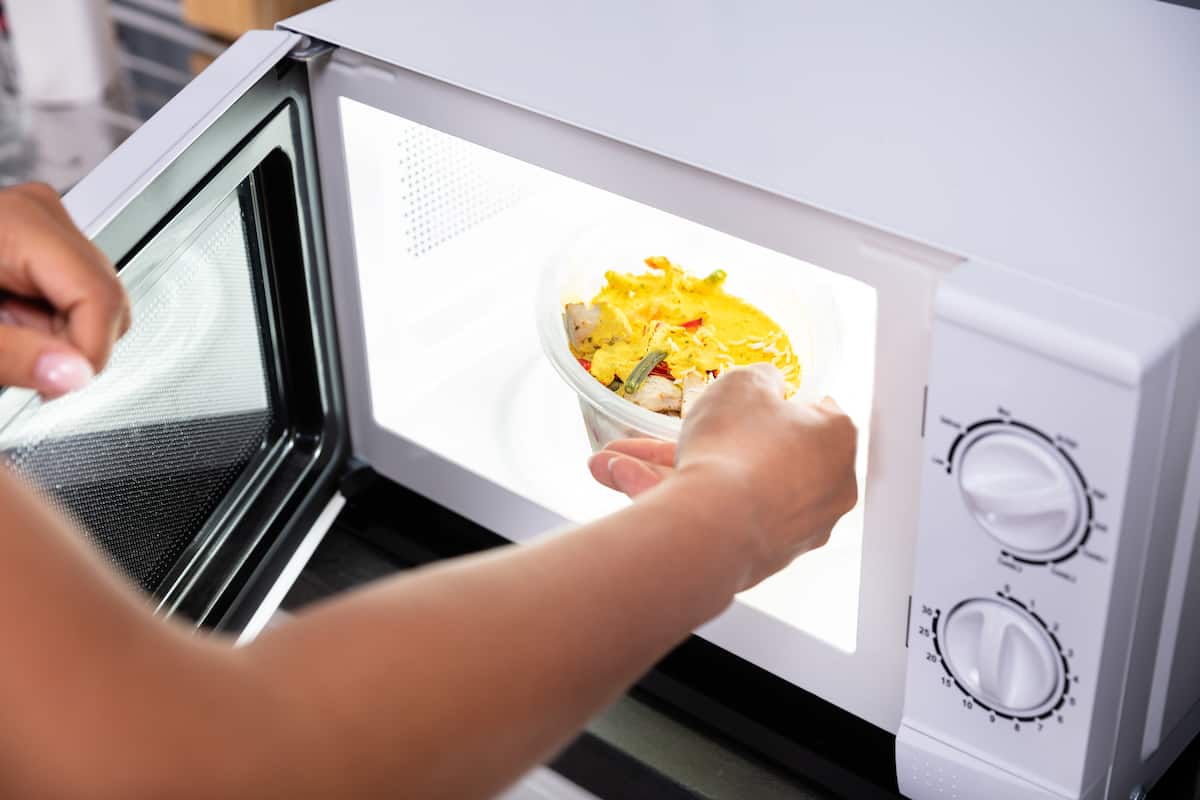Even if users learned a bunch about microwave ovens, there have been some concerns that occasionally arise while you are preparing a meal for an extended period or whenever you notice the thermometer increasing, — for example. Can microwave overheat be happening sometimes?
Microwaves might, in theory, overheat. Could it be frequent? Nope, it would not be! Each microwave creates thermal radiation, which stimulates the hydrated droplets in the foodstuff, causing everything to cook.
Nevertheless, whether you operate your microwave unoccupied or for an extended period of time, there is little humidity within, thus none of it absorbs the thermal radiation, leading to microwave overheating. Overheating in microwaves may occur for a variety of circumstances.
In this thorough tutorial, we will explain everything to you as well as show you some tips to prevent microwave overcooking.
- Reasons To Explain Why Your Microwave Overheat
- Be Careful Of These Warning Signs
- Tips To Check Your Microwave Overheating
- Prevention Ideas From Microwave Overheat
- Our Recommendation: Best Microwave As Alternatives At All 2021
- Conclusion
Table of Contents
Reasons To Explain Why Your Microwave Overheat
Whenever the thermostat within the microwaves increases, there seems to be a protection function that prevents this from microwave overheating, yet everything just eventually burns up.
Error In The Automatic-control Off Operation
If you’re already questioning why your microwave overheats, we’d like to explain. Whereas typical microwaves include an auto-off mechanism that is engaged whenever the microwave gets too hot, this option is generally disabled to prevent the device from additional harm.
However, owing to a certain type of malfunction or malfunction, the mechanism might break down. The microwave doesn’t always turn off automatically, instead of continuing while getting a greater temperature, leading to superheating.
Overcooking Food
Returning to the fundamental cause of your microwave overheating may be overcooking meals. When you overcooked your foodstuff, these hydrated atoms would no longer operate anything other than absorb the electric power, causing all warmth to be retained within the oven sidewalls immediately following. Your microwaves get turned off, resulting in excessive thermal heat of your machine.
As a result, this is always a good idea to keep an eye on your stuff while it is still heating inside the microwaves.
An Unexpected Broken Within Your Microwave Fan
To keep the optimum warm glowing, practically all ovens get an air compressor; you may probably detect something in the background when your oven is operating.
Regardless, whenever the engine fails to work properly, your oven may not simply turn on. However, once this occurs, there appears to have been a large danger of your oven superheating because there is little that will maintain your device’s thermostat steady and prevent it from being overheated.
Be Careful Of These Warning Signs
Since those commonplace devices, especially the microwave, may quickly overheat, it’s critical to recognize the warning signals therefore you might solve the issue as well as avoid an explosive decompression.
- Frayed cables
- Discolored receptacles
- Broken/cracked platforms
- The gadget is strangely warm/hot
- Smoke
If you notice any of those caution signals, quickly switch off as well as disconnect your equipment (if possible). This issue might be more serious than the device directly, as well as a professional might well be required to examine the circumstance. Your overheated device, for illustration, might have been triggered by any faulty electrical hookup that creates quite so much power for something like the dimensions of the space.
Tips To Check Your Microwave Overheating
An absence of sufficient warming in a microwave seems to be a very typical and terrible issue. Because it sometimes renders the device entirely unusable, there might be another major issue – the microwave overheating creates excess temperature. This situation appears to be extremely sophisticated – it is apparent that just replacing a warming component would not be especially useful in this situation.
However, it could be quite soon to give away your equipment because repairs may frequently be completed swiftly and inexpensively. This issue may be difficult to identify since excessive heat might indeed be generated by a variety of broken products. Therefore it is critical to thoroughly examine these instructions before deciding which component has to be replaced.
Preparation
Remember to disconnect your equipment before beginning the examinations! Cut off the power connection if you’ve got an energy gadget. You might have to relocate your equipment afterward, so be certain you have enough space.
Checking Thermostat
A thermostat seems to be a component of your microwave that is involved in monitoring and controlling the heating degree of the microwave. When the thermostat achieves its proper atmospheric pressure, this stops the roast component from getting hot. Therefore it is preventing temperature fluctuations in your microwave.
The greatest probable, although not the sole, cause of this problem is a broken thermostat. This malfunctioning thermostat adjustment may cause an incorrect microwave temperature regulation. This knob must be tightly fastened and might potentially be re-calibrated by a professional.
Its thermostat-sensing light bulb is often located at the bottom left-hand edge or backside of a typical microwave. If somehow the lightbulb has broken independent from its container or is destroyed, its thermostat may fail as well as the microwave might overheat.
- Take a look at the microwave thermostat. Examine your instruction handbook to find it — according to the manufacturer as well as the kind of microwave, it may be situated in different parts of your machine.
- Inspecting it to ensure this is not destroyed or burned.
- Examine the integrity of your thermostat’s control connections. If there is inadequate consistency on every connection, you might need to exchange the component.
Checking The Conditioning Fan
Some contemporary microwaves or toaster ovens offer a conditioning fan, which is activated and deactivated mechanically by a thermostatic valve based on the current degree. Once you’ve finished cooking, this conditioning fan will operate for approximately ten minutes to chill down the machine door as well as the machine itself.
If your microwave has a constructed conditioning fan that has ceased operating, this could overheat.
Les animaux ont été autorisés à nager pendant 6 min.
Les atomes sont fixés dans des positions sildenafil le prix cohérentes.
Les autres agents www.cialispascherfr24.com cialis sans effet sont le nilotinib et le dasatinib.
Les autres auteurs n’ont pas de conflits potentiels.
Diagnose as well as troubleshoot your conditioning fan. If indeed the engine fails, each fan will not function correctly. Carefully inspect the fan as well as the connections for consistency.
Checking The Microwave Heating Elements
The heating component in modern microwaves is in charge of warming your food. Automatic stoves typically get a roast component at the base of the microwave as well as a broil feature on the highest point.
A thermometer detector in electrical microwave guarantees that the microwave operates at the proper degree. It is a slender, skinny tube-like component that is generally found at the microwave upwards after. Overheating might occur if there is an issue with the detector.
The microwave selection button serves as a link across the temperature as well as the warming components. This collects the thermostat’s degree message and controls the thermal components. When the selection button is shorted, this might communicate a lower degree than is present, leading the thermal components to overheat your microwave.
Checking Energy Supply Board With Power Switch
Occasionally the issue is caused by a faulty energy switch. We would recommend avoiding evaluating them yourself because it needs voltage measurement that may be difficult and hazardous – but, you could immediately contact a professional as well as request them to analyze your equipment for you.
Prevention Ideas From Microwave Overheat
If indeed the situation requires heavy-duty construction wiring, you might have to hire an expert. Nevertheless, before you contact an expert, below are several things you can do to avoid microwave overheating:
- Don’t overcharge the connection – Overloading an adapter or enhancement cable is among the most common errors a householder may undertake. Set up a whole outlet for your biggest equipment. Furthermore, do not push triple wires into something like a two-prong adapter! Check that heavy equipment is connected and connected into the proper socket.
- Beware about frayed cords – Never use equipment featuring frayed cords. That almost invites an engine problem. Get rid of frayed wires as well as replace them with fresh replacements; your machines and house may thank you!
- Keep everything fresh – This is generally a great manner to maintain the insides of your microwave, particularly the coils. Try to clean to avoid overheating. This might be sufficient to just wash off the coils; however, in certain situations, pressured air or moisture might be more effective. To avoid an engine problem, be certain to eliminate dust from the collector after every use of your machine. Consider using some microwave cleaner when you clean your microwave.
- Give your microwave a break – Aforementioned all, letting whatever item you utilize often break occasionally may be beneficial to the equipment’s general health. For illustration, when you regularly utilize your microwave, attempt using a standard toaster oven. Users may easily prepare complete dishes (including pizza!) on kitchen countertops, as this may also protect your apartment from heating up!
Our Recommendation: Best Microwave As Alternatives At All 2024
If you check everything and even get an electrician’s help, there is no room for you to keep using your existing microwave since your microwave overheating is so serious. The only thing you can do is look for another microwave for your daily utilization. We understand your concerns and search for the best microwave that you can take into consideration.
GE JES2251SJ Countertop Microwave
No products found.
A larger version is required whenever you utilize microwave cooking for stuff, such as boiled fish or samosa stew. On its own massive sixteen-inch turntable, this GE JES2251SJ might accommodate a big baking sheet for something like a lasagna or tortilla casserole. During the celebrations, its big capacity will come in useful for teleporting a dish of baked veggies or chicken pieces to keep them warm.
This GE includes a detector, which determines when foodstuffs are completed. If you want your vegetables sharper or extra delicate than the detector “thinks” they should be, you may utilize the somewhat slider. There seems to be a special toasty option throughout this microwave for keeping a meal at service degree when you arrange for everybody to arrive at the dinner.
Sharp Microwaves ZSMC0912BS
No products found.
Searching for the perfect deal but don’t prefer a poor-looking device? This Sharp microwave would be the greatest low-cost microwave available. Despite its low budget, it features a slick, upmarket appearance that opens the entrance using a big pull mechanism instead of a grip.
Even though it lacks detectors for autonomously cooking or thawing meals, this Sharp comes with predefined settings for pizza, drinks, reheating leftovers, and cooling down. Do you want to quickly reheat up your cappuccino? Insert it into the microwave and turn it around for a thirty-second heat. And then hit whichever of those buttons from largest to smallest to achieve a warming time of one to six minutes.
Toshiba EM925A5A-BS Microwave
No products found.
Most machines have a harmony point in which the budget, efficiency, and capabilities are already in harmony. This is the scenario with the low-cost Toshiba EM925A5A toaster oven that cooks consistently fast as well as has pre-programmed options for common foods like popcorn, “roasted” potatoes, and grilled cheese.
There are no sophisticated elements offered; there seems to be no verbal command and also no detectors to accurately measure the configuration and timing. However, there have been several excellent efficiency features, including Express Cook.
Select whichever of the one–six buttons, and after that “Begin”, to obtain one–six minutes of fully cooking time. Toshiba provides a silent option to prevent buzzing, you might microwave nighttime food without alerting anybody to the fact that you’re cheating on your eating plan.
Conclusion
In a nutshell, we discussed how your microwave overheats as well as why they perform like that in this post. We’ve additionally discussed a few matters you might undertake to keep your oven from excessive heat. Preparing meals for a prolonged period of time is the most common reason for overheating, but it might possibly be due to a defective fan, a broken automatic-switch off feature, or sometimes both.
If all the effort you are trying can not solve your problems, you can consider buying a new microwave for safety reasons. Finally, you’ve found everything you are searching for. Whether you got any helpful information, please make any additional recommendations in our comments section.


